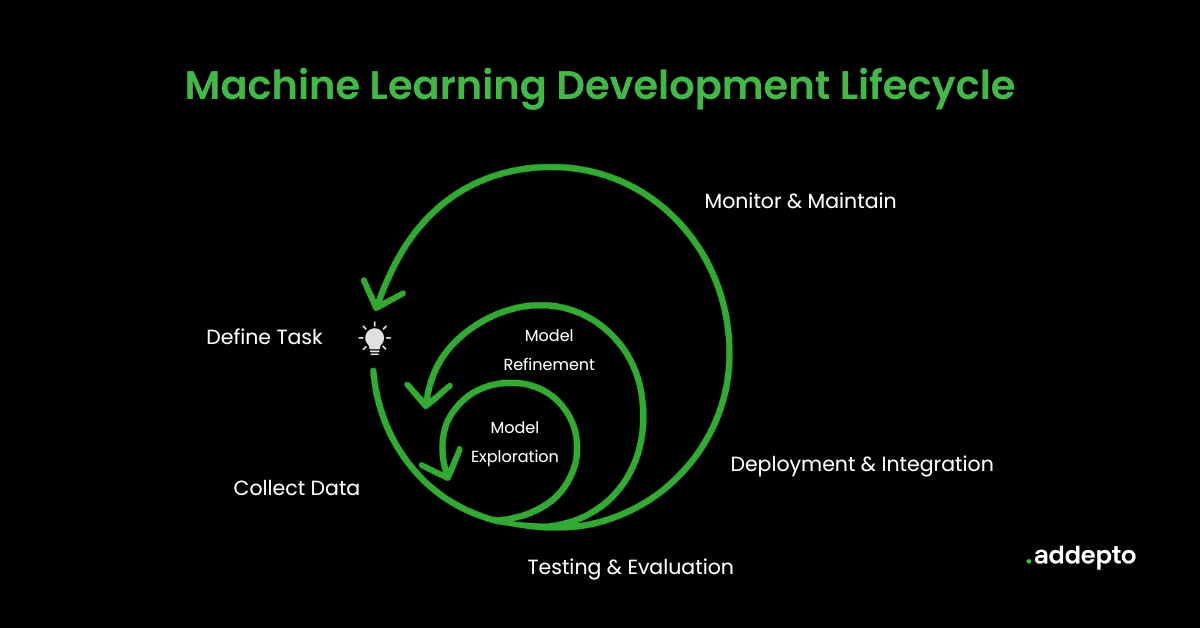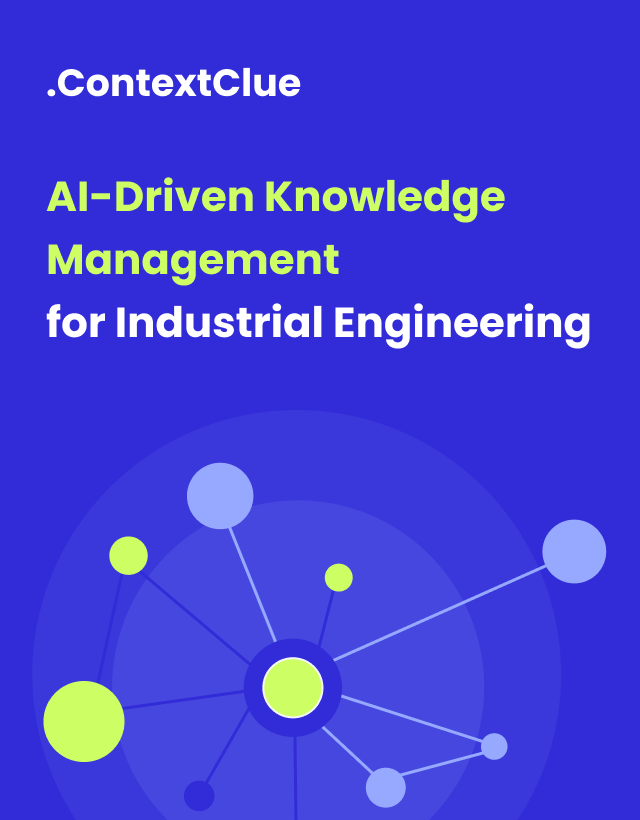
September 12, 2025
From Software to AI: Why Traditional IT Project Approaches Will Not Work in the Age of Artificial Intelligence
Author:

Engineering Manager
Reading time:
6 minutes
Artificial intelligence is rewriting the rules of technology projects. While traditional IT development follows predictable phases – from gathering requirements to implementation and maintenance – AI initiatives demand an entirely different mindset. Data sits at the core of the process, outcomes are often less predictable, and iterative experimentation is essential to reach valuable results.
In this article, we explore why conventional software development methodologies are not enough in the AI era, and which competencies organizations need to truly gain a business advantage.
From Industrial Revolutions to the AI Revolution
Technological progress has always come in waves of transformation – from the steam engine, through the invention of long-distance communication, to industrial automation and the digital era of data collection. Yet, the past few years stand out as uniquely transformative.
We are witnessing the rise of artificial intelligence: from optimization algorithms and classical machine learning, through deep learning architectures, to today’s large language models (LLMs).
Software Development Projects – a Structured Process
The IT industry has been shaped by the explosion of applications, both web and mobile. Even complex development projects tend to follow a well-established framework:
- Gathering business and technical requirements
- Planning and architecture design
- Implementation and testing
- Maintenance and further development
Evaluation criteria are relatively straightforward – software is tested against defined functional requirements and must pass performance and technical tests. This structured, repeatable approach makes it possible to plan, execute, and deliver predictable results.

AI Projects – Complexity and Iteration
AI projects are a completely different story. Until recently, many organizations saw artificial intelligence as a distant trend. That changed dramatically with the emergence of ChatGPT, which made AI tangible and accessible. Suddenly, every company wanted to launch an AI initiative.

But unlike traditional IT projects, AI projects come with unique challenges:
- Business requirements go beyond feature lists – they demand a deep understanding of the processes that need optimization.
- Data becomes the foundation – collecting, cleaning, enriching, and validating datasets is a prerequisite for success.
- Modeling is iterative – selecting the right algorithms, tuning hyperparameters, and defining evaluation metrics requires ongoing experimentation. Often, the baseline performance level cannot be determined in advance.
- MLOps is essential – just like DevOps revolutionized software delivery, MLOps ensures continuous training, monitoring, and adaptation of models to changing input data.
- Ultimately, even the most sophisticated AI model ends up embedded in a larger application ecosystem, becoming a component of a broader software project.
| Aspect | Traditional IT projects | AI projects |
|---|---|---|
| Requirements & Specifications | Functional requirements and technical specifications are defined upfront. | Business goals and processes must be deeply understood; requirements evolve with data insights. |
| Acceptance criteria | Clearly measurable against predefined features and performance benchmarks. | Based on performance metrics (e.g., accuracy, precision, recall), but outcomes are probabilistic, not absolute. |
| Verification tests | Unit, integration, and performance testing ensure software behaves as expected. | Model evaluation with training/validation datasets; ongoing monitoring for data drift and bias. |
| Project phases | Linear and structured: requirements → design → implementation → testing → maintenance. | Iterative and experimental: requirements → data collection → data exploration → modeling & optimization → evaluation & validation → deployment & monitoring. |
Will AI Replace Humans?
A recurring question is: can AI models achieve 100% accuracy? The short answer is no. Model performance is limited by the quality of input data and computational resources.
This means that AI is not here to replace doctors, lawyers, or analysts. Instead, it serves as an augmentation tool – supporting decision-making, accelerating workflows, and generating insights. Even advanced multi-agent approaches, where models critique one another, still require a human to make the final call.
At the same time, the rise of AI demands a fundamental shift in skills and mindset. Simply collecting data is no longer enough – every organization can do that. Competitive advantage belongs to those who understand their data, assess its quality, and leverage it to directly impact business outcomes.
How We Work at Addepto
At Addepto, we specialize in AI-driven projects, combining technical expertise with a deep understanding of business processes. Every engagement begins with workshops and in-depth analysis of client data. Together with business teams, we identify the processes that have the greatest impact on costs and revenue generation.
Equally important is recognizing the limitations of AI models. A lack of 100% accuracy does not indicate failure – it reflects the inherent characteristics of the technology. The real value lies in understanding where models may underperform and designing safeguards to mitigate these risks.
This structure positions Addepto as an expert not only in building AI solutions but also in guiding organizations through the unique complexities of AI adoption.
Frequently Asked Questions for Managers Considering AI Consulting Services
Q: How do I know if my organization is ready for AI?
A: You need three things: relevant data, clear business problems to solve, and willingness to experiment. If you have data and identified processes that could improve, you’re ready to start.
Q: What ROI should I expect and when?
A: Expect initial insights in 3-6 months, operational improvements in 6-12 months. Focus on processes where even 10-30% improvements create significant value.
Q: How much will it cost?
A: Budget for data preparation (60-80% of effort), model development, and ongoing maintenance. Unlike traditional IT, AI requires continuous investment for optimal performance.
Q: Why can’t we manage AI projects like regular IT projects?
A: AI projects are experimental and iterative. You can’t predict exact outcomes upfront, and requirements evolve as you learn what’s possible. Traditional linear approaches don’t work.
Q: How do we measure success?
A: Focus on business impact, not technical perfection. Set realistic improvement targets and remember that 100% accuracy isn’t necessary or achievable.
Q: What if the AI doesn’t work as expected?
A: This is normal, not failure. Good consultants build safeguards and help you understand where AI works well and where humans are still needed.
Q: Our data is messy. Can we still use AI?
A: Yes. Data cleaning is part of the process, and consultants can work with imperfect data. Often, preparing data reveals valuable business insights.
Q: What about security and compliance?
A: Ensure your consultant has experience with your industry’s regulations and can demonstrate proper security practices, encryption, and access controls.
Q: Do we need to hire AI specialists?
A: Start with consulting partnerships that combine external AI expertise with your internal business knowledge. Build internal capabilities gradually.
Q: What should I look for in an AI consultant?
A: Choose partners who understand business processes, not just technology. Look for industry experience, realistic communication about limitations, and iterative approaches.
Q: How do I avoid consultants who overpromise?
A: Avoid anyone guaranteeing specific results or claiming AI will solve everything. Good consultants discuss limitations upfront and propose pilot projects first.
Category:





